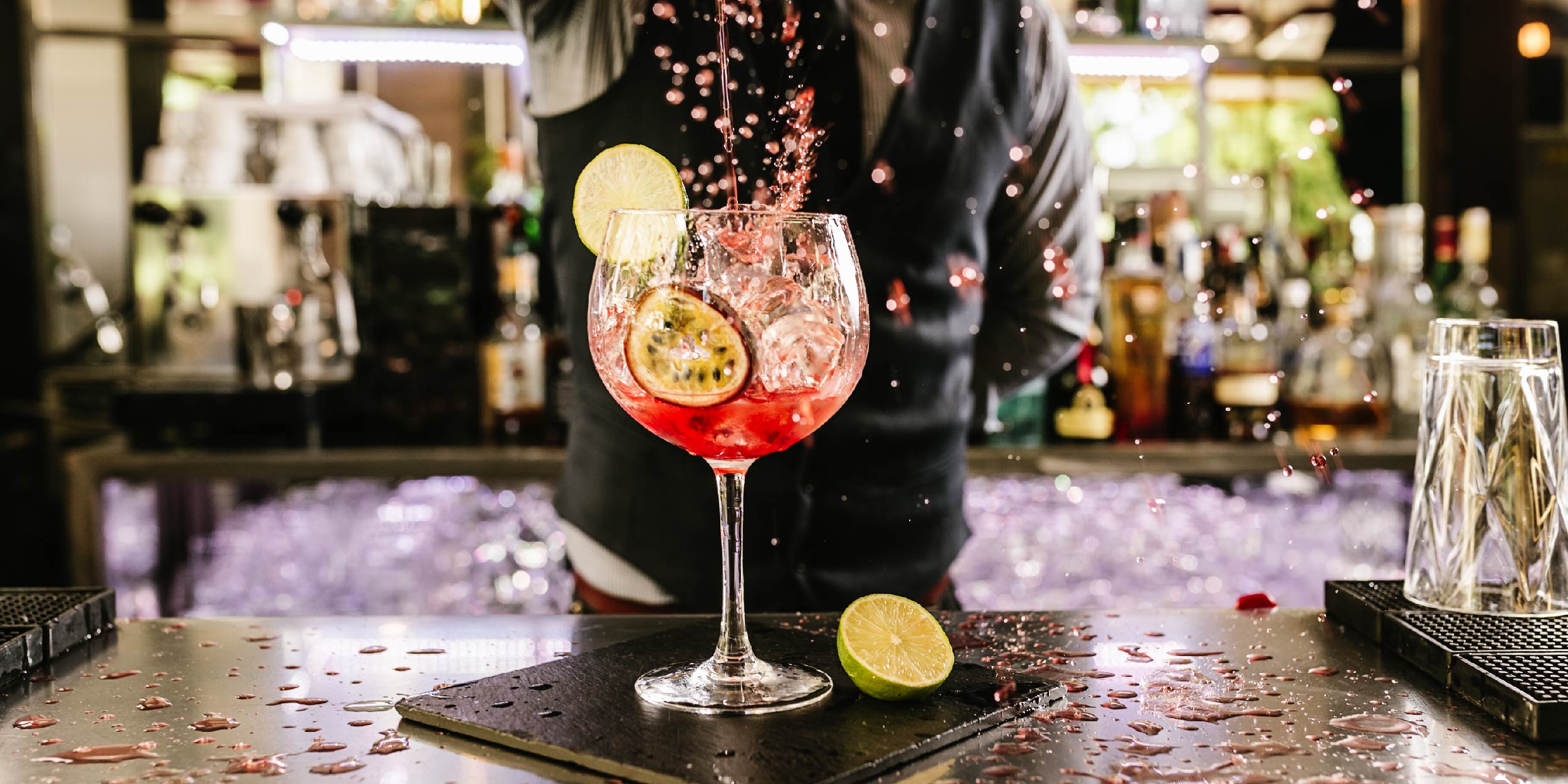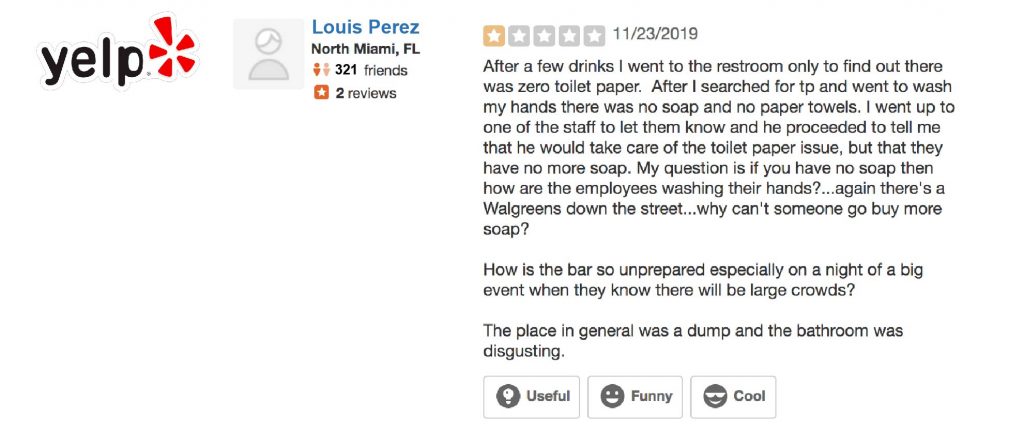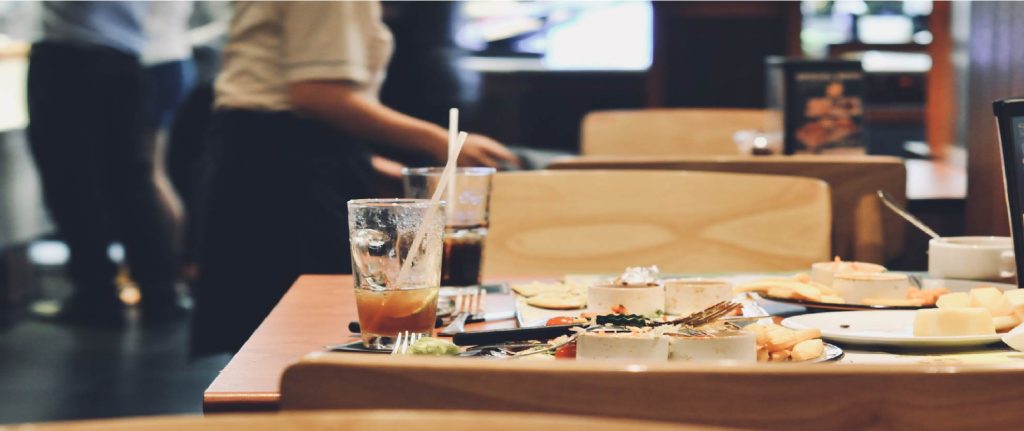
How a Quality Barback Can Save Your Bar From Ruin18 min read
In today’s post, we’re going to discuss the preliminary steps of opening a bar and one of the most important requirements for keeping a bar functioning at a high level.
It may not be what you expect.
You see, while reputation, brand and word of mouth can all contribute to a bar earning a healthy profit, it’s the people at the front line doing what needs to be done, day in and day out, who keep that revenue rolling in. One of those people is the barback.
In our first post on the barback, published last year, we touched upon what a barback was, and what their duties were. In this post, we’ll do a much deeper analysis, exploring why this staff member is absolutely essential to your success.
First, we’ll tell you how to identify a bad barback. Then we’ll tell you what the barback should be doing for you during the three main phases of the business day: before service, during service and after service. Finally, we’ll divulge strategies you can use to retain skilled barbacks—so you spend less money on turnover.
Let’s get started.
Why a Skilled Barback Is Essential
So, what is a barback?
The barback is one of the most important positions in your bar, hands down. Think of your bartender more as the face of your operation. Yes, they should be competent drink mixers. They should also have an outgoing personality, strong communication skills, the ability to work well with others and a good dose of stamina, to boot. But bartenders can’t do everything. They can’t be everywhere at once.
That’s where a good barback comes in.
Imagine the barback as the bartender’s assistant. The position is also known as:
- Bar backer
- Bar runner
- Runner
Perhaps a more illustrative way to describe this person’s role is as the person who is frantically trying to bail water out of a sinking ship. Ask any experienced bar owner and they’ll tell you, that’s exactly what a busy Friday or Saturday night can feel like sometimes. While the bartender is smiling, mixing drinks and socializing—all required to ensure that guests have a great time—the barback is hustling behind the scenes to keep things running smoothly.
A good barback provides another service to you, too: if something does go wrong, your customers never find out about it. This, night after night, is how you build a stellar reputation. Building reputation is more about actions taken by staff, consistently, then it as about savvy marketing campaigns.

A bad barback, on the other hand, leaves signs too. Let’s look at three of these.
#1 Skunky Beer
Savvy bar customers will glance at the beer fridge when they enter. What are they looking for? They’re looking for chaos. if the labels in the beer fridge are facing in every possible direction, then there’s a good chance the beer is skunky.
Skunky beer: beer that has been over-exposed to sunlight, or that has otherwise gone bad.
As you likely know, when operating a food or drink establishment, you should follow FIFO, first in, first out. This means that as you stock your beer fridge, new bottles are moved to the front, and the old bottles are placed in the back. A lazy, disinterested barback will place them in no particular order. This means that some of the beer in your fridge will be older than it should be.
Moreover, your barback should always place the labels facing outward. This provides some protection against UV rays entering through windows. Not much, but some. Every little bit helps.
#2 A Dirty Bar or Floors
A well-trained barback will keep the bar clean at all times. They may also sweep or mop during slow periods. Another thing that bar connoisseurs look for when entering is the stickiness level of the floor. A neglected floor makes it more likely that the bar is being neglected too.

#3 An Agitated or Unfriendly Bartender
If your bartender has morale issues, it’s likely that your barback isn’t chipping in enough. A barback who slacks off puts stress on the bartender. The bartender is expected to be chipper and outgoing while mixing quality drinks. They don’t have time to do menial tasks like sweeping, mopping or scrubbing the bar.
Note: bartenders becoming overly chummy with barbacks and helping them with their workload is not uncommon. You should discourage this.
Naturally, keeping a skilled barback on staff can prevent the above issues.

Summary: the top priority of the barback is to support the bartender. A skilled barback will anticipate the bartender’s needs, lessening their stress level. In addition, they may clean and restock during slow periods.
Other Benefits Provided by the Barback
The barback helps your operation run smoothly by performing key functions at three times of day. Of course, they’re doing other things throughout the day, but most of their value comes from what they do:
- Right before service
- During service
- Right after service
Let’s take a look.
#1 Before Service
Before the busiest time of day or night starts, the barback’s main responsibility is to get the bar ready. This may include activities such as:
- Stocking beer or liquor that was just delivered, using FIFO protocol
- Stocking each bar station with straws, napkins, coasters, etc.
- Prepping juices
- Prepping garnishes
- Creating a backup supply of juices, garnishes, etc., in case the shift is particularly busy
- Various cleaning tasks
- Consulting with the bartender to confirm that stock levels are now adequate
#2 During Service
During service, the barback fades into the background as the bartender works their magic, but if you’re observant, you’ll definitely see them buzzing about. They typically:
- Restock bar stations
- Clean the bar top
- Refill glassware
- Change kegs
- Stock the beer fridge
- Check stock levels of juices, syrups and spirits
On occasion, you’ll also see the barback taking orders and mixing drinks. However, this typically only occurs if the bartender has to step out or if the flow of customers is particularly high.
#3 After Service
Once the bar closes down, the barback helps the bartender break the bar down for the night. This will include a final clean of the bar to prevent stickiness, and it may also involve a sweep and mop of the floor, depending on whether you have dedicated cleaning staff or not. They may also do things such as:

Essential Skills for Any Barback
Many bar owners like to promote barbacks to the bartender role. This makes sense as many barbacks hope to become bartenders anyway. In this section, you’ll learn about the six skills any barback must have. When thinking about choosing a barback to promote, look for a candidate who possesses all of these skills in spades.
Note: your barback is the backbone of your bar. They need to possess all of these skills. If they don’t, consider training up or letting go. Many people who aim to be bartenders consider the barback position a necessary stop along the way. But some people are content to stay in the role. This isn’t necessarily a bad thing, but a subset of these individuals will do the minimum amount of work required.
Additionally, note that barbacks will often be the least experienced members of your team. But that doesn’t mean you shouldn’t expect them to gain skills once hired. Always have an experienced barback on staff who can show the newer employees the ropes.
#1 Bar Setup and Break Down
Assign a new barback to a shift that allows them to either set the bar up or break it down. Knowing how to do both is essential for a barback and for anyone who wants to graduate to the bartender position. This involves, at a minimum:
- Wiping the bar down. Whether your bar is aged wood, granite or some other material, the condition of your bar is a statement about your overall sanitation standards. A barback may wipe the bar down at any time, but it absolutely needs a good scrubbing and degreasing after your busiest time of day. Skin contains natural oils. These oils create shine and unsightly streaks, and they also trap bacteria within them.
- Taking out the trash. The barback should take out the trash throughout their shift, but especially after the bar closes. Never let trash sit in your establishment overnight. This is an open invitation to roaches and flies.
- Cleaning the high-temperature glass washer. Once the glasses are sparkling, the glass washer needs some love too. The barback should change the water tanks throughout the day, but especially at closing.
- Sweeping and mopping behind the bar. Spot cleanings throughout the day are great, but your barback should do a thorough cleaning once the bar closes, too. Don’t let filth pie up, as this is again an invitation to insects.
- Sanitize ice bins. Your ice bin is essential to your bar’s operation. It allows you to reliably and quickly serve chilled drinks. Your barback should periodically empty and sanitize this bin to ensure you’re serving safe ice. They don’t need to do this nightly, but it should happen on a regular schedule.
In addition, a skilled barback will do many other things for you once the bar is closed, including cleaning your floor mats, wiping down any bottles that are in the speed well, cleaning the speed rails and cleaning soda guns.
#2 Cleaning Glassware
This one gets its own special mention because it’s so important. A good barback knows the importance of keeping the glassware clean. It’s one of those things that customers check for. If the customer sees smudged, grimy glassware, they’ll assume your entire operation is subpar.
#3 Running Dishes

Your barback will sometimes have to run dishes from the kitchen to customers, and they should be okay with this. A good barback is a team player, and they won’t feel this is beneath them. Moreover, providing this service helps them become familiar with your other menu items so they can answer customer inquiries.
#4 Working in Harmony with the Bartender
A good barback knows what your bartender needs. This includes keeping juices available, making sure garnishes get made, etc.
#5 Pouring Beer and Wine
The barback should know how to pour various alcoholic drinks. Keep in mind, however, that a brand new barback may lack the confidence or finesse required to do this in front of customers. Moreover, make sure your barback is legally of age to serve alcohol before asking them to do so.
#6 Managing Inventory
As mentioned, your barback should keep an eye on inventory stocks at all times. One of their main roles is to keep the bar stocked, in fact. A good barback internalizes your bar’s ebb and flow so they can predict issues before they happen.
What Your Barback Expects in Return
Some barbacks see it as a job, and nothing more. Others see it as a steppingstone toward a rewarding career as a bartender. In either case, there are two things that most barbacks expect. To keep the best barbacks on your staff, you should meet these expectations if possible.
#1 Higher Tips

Although their job is similar to the role of busser, barbacks expect to earn more in tips than they would in that position. The reason for this is simple. When they do interact with customers, they’re the only person other than the bartender who is doing so. So when they have to step in briefly for the bartender, for instance, they expect to collect quite a bit in tips.
To put this another way, as a busser, they would have to split the tips between more people.
#2 Do More & Earn More
Even if the barback doesn’t want to progress to bartender level, they’ll still expect to learn while on the job. The more they learn, the more they’ll expect their base pay to increase. Consequently, don’t expect to pay an experienced barback what you’d pay someone who is new to the job.
Don’t give them more responsibility unless you’re going to give them a raise or ensure they have an opportunity to earn tips. Doing so is a good way to lose a skilled employee, and new employees are costly to train.
Note: because many folks take the job with the aim of graduating to bartender after a while, you should make it clear whether this is in the cards or not. For instance, if you only ever hire experienced bartenders, let your barbacks know that when you offer them the job. They may decide to go somewhere else, but you avoid any potential resentment. Resentment can affect job performance.
Retaining Skilled Staff
Over time, it costs more to train new staff than it does to retain experienced staff. So it’s good practice to do everything you can to keep your staff happy. When a bar is running smoothly, it’s only natural to stand back and appreciate that smoothness. The cocktails and drinks flow while the patrons chatter amiably to each other. The barback moves to and fro, barely noticed, while the bartender engages with guests. But don’t get complacent.

It can be easy to forget that in order for a bar to reach this flow state, a lot of things have to go right.
Hitting that flow state consistently requires a dedicated effort from every team member. This means that team members put the good of your business above their interpersonal squabbles. Make no mistake: the bigger your team, the more conflict you’ll have within it. You’ll have people working for you who have varying personalities, and those varying personalities will clash.
To reach that Zen bar flow state, then, requires that you hire, train and retain professional staff members.
It’s the retaining part that can be particularly challenging. Skilled team members get poached all the time, and while you can’t always prevent it, you can prevent it sometimes, and that adds up. So, how do you make it more likely that your trained staff will stay with you?
#1 Remember That Everyone Has Bad Days
As employers, it can be difficult to remember that we all have bad days. If your barback makes a mistake, don’t humiliate them by dressing them down in front of the bartender, and absolutely don’t do it in front of customers.
When there is an issue you need to address, remember that people are fragile.[6] Everyone on your staff has:
- An ego. A sense of self that is tied to self-worth.
- Feelings. Feelings that you can hurt quite easily. Hurt feelings lead to resentment, which can contribute to a skilled, valued employee seeking employment elsewhere. What’s more, emotional thinking brought on by a stressful work environment can impact work performance. This can lead to a cycle of poor performance, redress and more poor performance.
As the leader, you also have an ego and feelings. As employers, we often worry that employees are trying to take advantage of us. Don’t fall into this trap. If your barback has an issue, deal with it analytically, not emotionally. Let them know how you intend to help, whether that’s through additional training or some other measure, but also make it clear that you expect to see improvement.
Showing that you’re willing to work with them to remedy the problem will go a long way.
#2 Give Employees the Tools They Need
To keep bar staff happy, you have to meet their day to day needs. They’ll need basic bar tools, quality glassware, adequate refrigeration options, speed wells, speed rails, and clean uniforms. Don’t skimp on these tools and then expect your staff to wear a happy face. This might work for a while, but you’ll see high turnover, and that will eat into your bottom line.
You want your staff to walk in and only have to worry about their own performance. You don’t want them to worry about whether the fridge is going to crap out or whether the soda guns will stop working mid shift.

#3 Encourage Creativity
Nothing kills the mood in a bar more than an overbearing, corporate feel. Encourage your bartender to express their creativity. This will create a trickle down happiness effect that will impact your barback and other staff.
Keep in mind that many bartenders are also musicians, writers and artists. Though bartenders tend to be outgoing, it is also a profession that attracts introspective, creative individuals. These are people who like to observe human behavior and who like to experiment.
One thing you can do is ask your bartenders to come up with ideas for new drinks. However, if you do make changes to your menu based on these drink ideas, give all staff a few weeks to practice with the new recipe before taking it live. Few things frustrate bar staff more than constantly having to learn new drinks.
#4 Don’t Make Sudden Changes
Along the same vein, avoid making any sudden changes. This includes hiring new managers, switching POS systems or transitioning to a 24 hour bar. If you have to make major changes like these, give your staff as much time as possible to prepare.
As a general rule, the less warning you give about these major changes in routine or status quo, the more chaos you can expect.
Employees like stability. When you do make a major change, strive to get things back to normal as soon as possible.
#5 Maintain Professional Distance
Many new entrepreneurs make the mistake of being too buddy-buddy with staff. This is an understandable mistake to make. We all want to be liked. But being a friend and an owner at the same time is an incredibly difficult balance to strike. Often, it’s best not to try.
This doesn’t mean you should be unfriendly. Far from it. But it does mean that you should maintain boundaries between yourself and your staff.
One of the main complaints of staff when they’re poached is that their former employer exhibited favoritism.
You see, it’s hard to be friendly with staff without developing favorites. You might subconsciously go easier on someone because you like them, have more in common with them, etc. It’s only natural. Therefore, if your goal is to keep turnover rate as low as possible, you should strive to maintain professional boundaries with everyone, from the jump.
#6 Make Your Expectations Clear
Make sure your barback and other staff members are clear about all their responsibilities, and don’t add new responsibilities out of the blue. Make it clear what will happen if staff doesn’t live up to these expectations. Do this at onboarding. Don’t wait. Be firm, but be pleasant, and, well, human. It’s okay to be friendly. In fact, it’s a good idea to be friendly and open while talking about the possibility of termination.
You’re not threatening them, you’re just making your expectations clear.
One of the Main Reasons for Bar Turnover
We felt we should put this last one in its own section, because it’s so important.
One of the main reasons for high bar turnover and restaurant failure is a slow, outdated POS system. A slow point-of-sale system impacts tips. If your staff has to waste time struggling with your outdated system, they have less time to wow customers.
What’s more, a modern POS system can help you monitor stock much more effectively than an older system can. Today’s POS systems have advanced inventory management features that can help you detect serious issues such as employee theft and product waste.
Here are a few reasons to consider an upgrade.
#1 Cloud-Based Operation
A modern POS can let you check in on your store, no matter where you are. If you have a mobile device and an Internet connection, you can manage your store remotely. This can provide you, the business owner, with more time at home with family and loved ones. Having to spend so much time babysitting a new operation is one of the major sources of stress for entrepreneurs.
#2 Reducing Inventory Errors and Theft
Because a modern POS stores data in the cloud, and because newer systems can more accurately track inventory, your data will be more precise and safer. With a modern POS system, you can see refunds and sales as they occur, and you can see your inventory going up as stock is delivered. All in real time.
#3 Identify Popular drinks
This is another way your POS can help you retain staff. With the powerful reports you can get from a modern POS, you can help staff identify hot-selling drinks. Making drinks suggestions that are likely to vibe with guests means your staff will earn more in tips.
#4 Better, More Modern Customer Service

With today’s mobile devices, you can enable your wait staff to take orders on the move. They can also display drinks and dishes on vibrant tablets connected to your POS system. Any time your staff saves in the order-gathering process translates into better customer service.
For instance, it’s far quicker for a staff member to punch an order into an iPad than it is for them to write it down.
We hope this concise guide has served you well. If you got value from this post, please consider giving it a share. Stick around, as we’ll cover more bar management topics in future posts.



